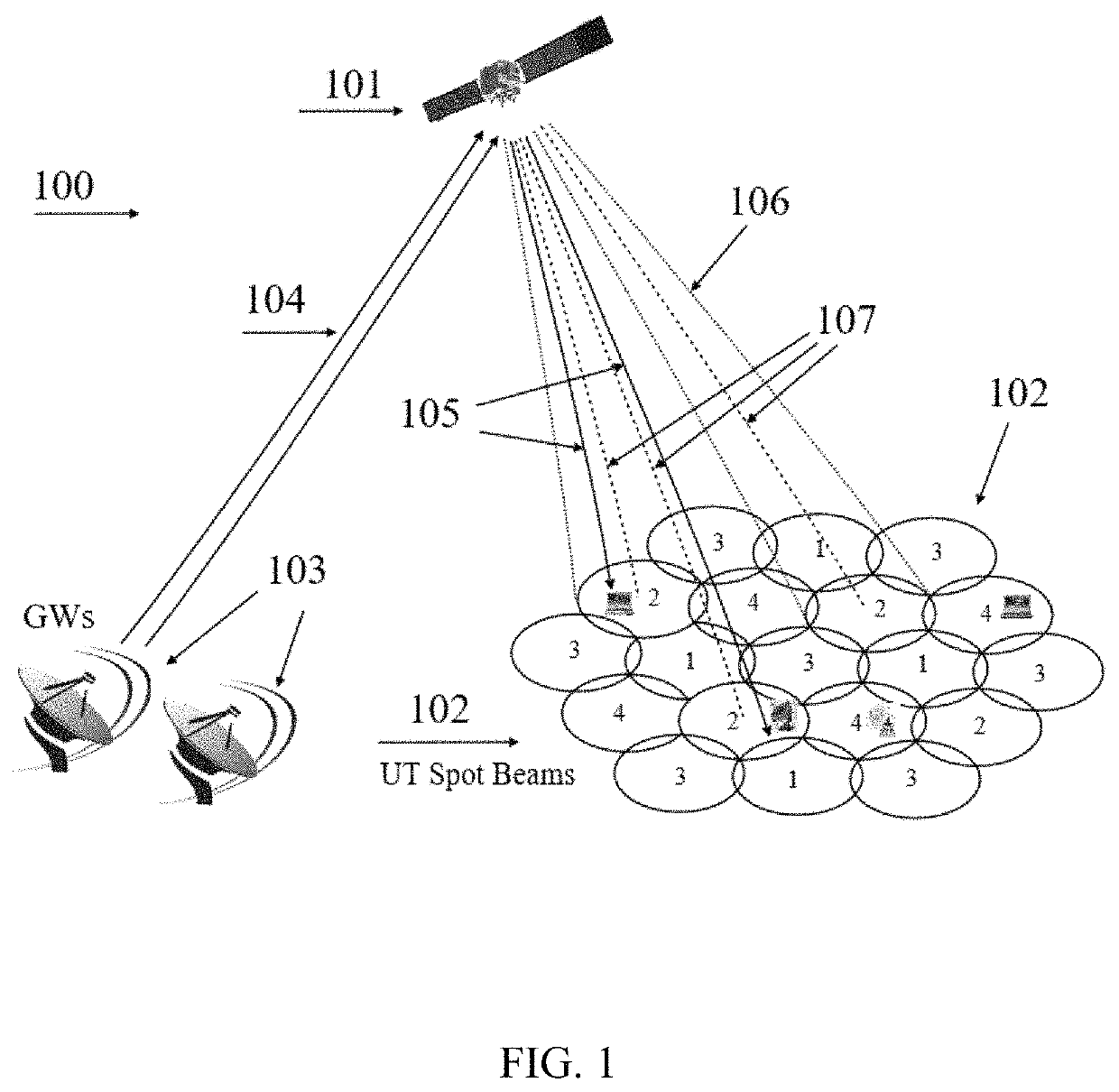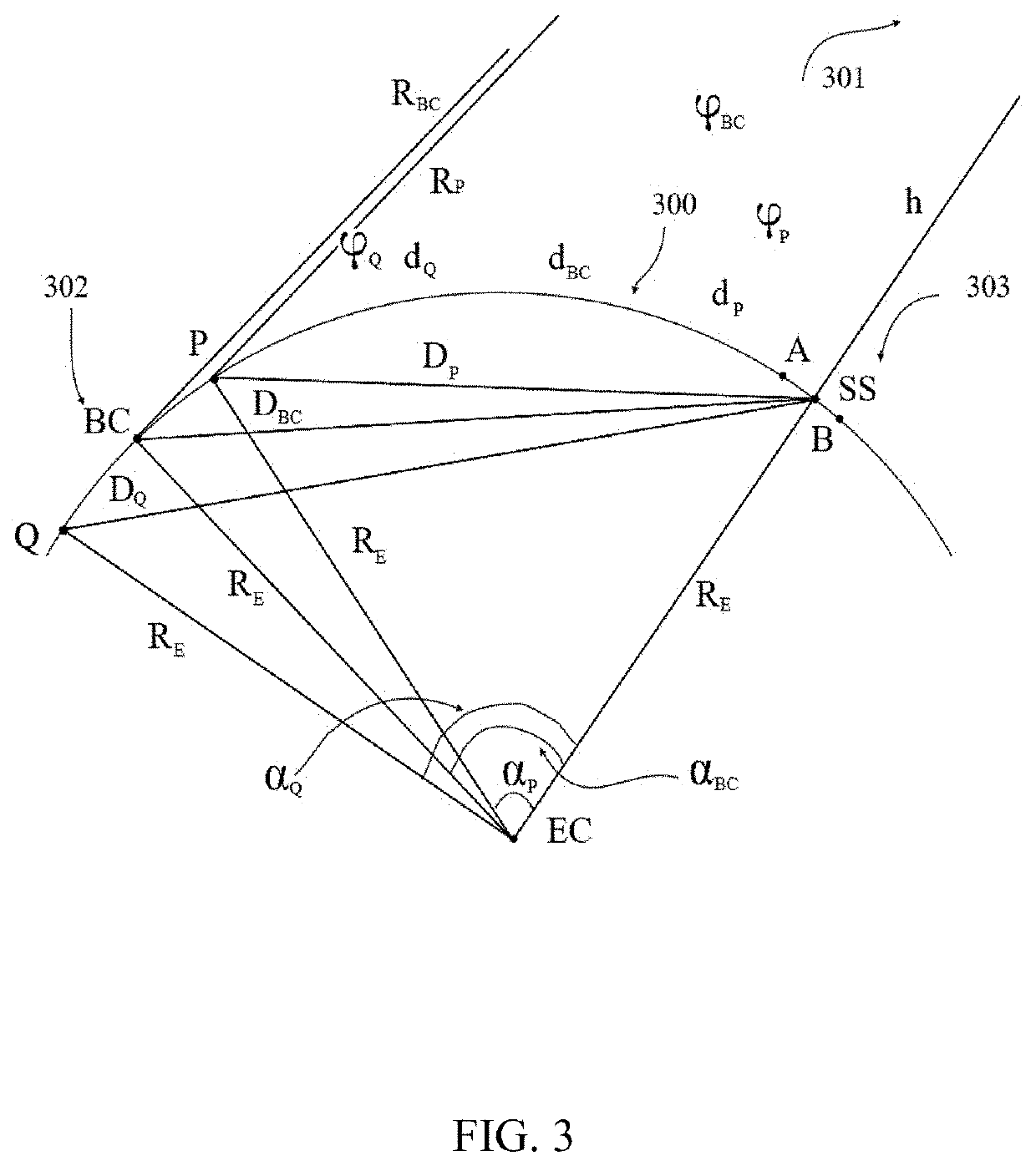Method for predicting spot beam high throughput satellite system performance
a satellite system and high throughput technology, applied in the field of satellite system ground segment design, can solve the problems of interfering spot beams of the same color radiated power of the satellite antenna with each other downlink, system ground segment faces much intra-system interference, etc., and achieves the effect of simple downlink design
- Summary
- Abstract
- Description
- Claims
- Application Information
AI Technical Summary
Benefits of technology
Problems solved by technology
Method used
Image
Examples
Embodiment Construction
[0018]FIG. 1 illustrates a typical HTS or multi-beam system 100 where the space segment consists of a geostationary satellite 101 and the ground segment includes gateways 103 as feeder links 104 and user terminals (UTs) such as VSATs distributed among the spot beams 102 downlink 105 from the satellite to a UT in a forward link of a gateway-to-UT operation; rays 107 are satellite antenna radiation pattern nadirs that define the signal power peaks measured as 0 dB in the centers of the spot beams while rays 106 represent the satellite antenna radiation pattern n dB apertures that trace out the n dB power contours of the spot beams when they are illuminated by the satellite antennas' radiation power. According to the HTS system architectural elements' denotation convention, the n dB contours of three adjacent spot beams of equal-radius meet at the triple-cross point as illustrated in 106 of FIG. 1 and in FIG. 2, and it is uniquely set.
[0019]FIG. 2 is a detailed sketch of color reuse am...
PUM
 Login to View More
Login to View More Abstract
Description
Claims
Application Information
 Login to View More
Login to View More - R&D
- Intellectual Property
- Life Sciences
- Materials
- Tech Scout
- Unparalleled Data Quality
- Higher Quality Content
- 60% Fewer Hallucinations
Browse by: Latest US Patents, China's latest patents, Technical Efficacy Thesaurus, Application Domain, Technology Topic, Popular Technical Reports.
© 2025 PatSnap. All rights reserved.Legal|Privacy policy|Modern Slavery Act Transparency Statement|Sitemap|About US| Contact US: help@patsnap.com



